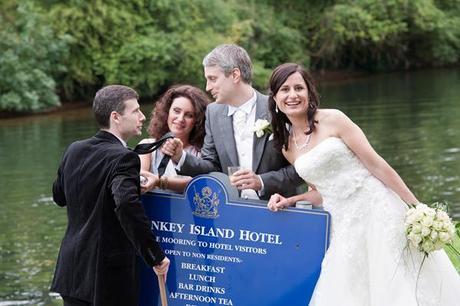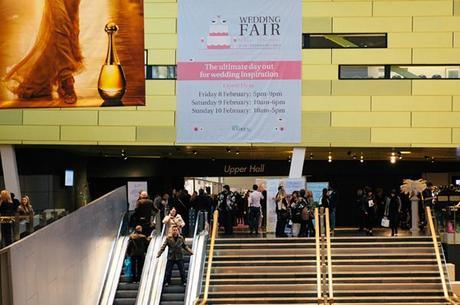This chapter will advise you on how to research and choose your photographer. Chapter 2 will be about how to make plans together with your photographer — exploring ideas for your day, figuring out what shots you want and getting comfortable with the camera. And finally, chapter 3 will be about your actual day — how things might run with your photographer and how to get the best shots.
The research stage — choosing wedding photography
1: Book a professional photographer
If you want fantastic photos from your day, make sure that your photographer is a professional. A key reason for this is that a professional will know in advance where to be for certain shots. But equally as important, a professional will be able to handle all sorts of “photographically difficult” situations. You may not have that gorgeous sunshine as that Californian wedding has that you’ve been looking at, and your venue might not be spacious and filled with amazing natural light.
Your photographer has got to be able to handle any kind of situation — know how to manually adjust camera settings in a split second, know what to do for strongest of sunshine as well as pouring rain, and quickly see how to get the best out of any location. A professional photographer will also dedicate the time and planning that he/she knows is necessary beforehand, in order to get everything as you want it on your actual day.
2: Compare!
When looking at different photographers’ work it’s important to know that every photographer is different to another. Every photographer will have their own style, different experience and training behind them. Here are a few hints of what you can look for when figuring out what you like:
- How do the images make you feel? Would you like to have this style of wedding photography from your day?
- Are the shots professional: Are they sharp where the main focus is, are they detailed, is the light exposure good and do you like the framing and composition?
- Are the moments well captured?
- What style do you like? Many wedding photographers might be practicing or have a background in other styles of photography as well — such as fine art photography, landscape, fashion, photojournalism, etc — which probably will be prominent in their style of wedding photography. Here are some examples of the current trends in UK wedding photography:
- Editorial (Inspired by magazines)
- Photojournalist /Reportage
- Contemporary and edgy
- Fine art photography
- Creative portraiture.
- Or perhaps you’d prefer something more traditional and posed.
Look at the post production techniques and the image compositions. There are many ways for the photographer to process the RAW file from the camera in to color or black and white. Colours can for example be gritty, vintage, crisp and natural, or saturated. Black and white shots can for example be slightly toned, grainy, non grainy, very contrasty or not contrasty.
And there are many ways that a shot can be executed — it can be a total snap, or the photographer could have been very careful with what has been included in the image and paid a lot of attention to the composition. Composition can easily be explained as “all the elements in the image” + how a shot has been framed, and this is a part of the photographer’s style.
… As you can see, there are a few things to think about, when figuring out what you like! Here are a few examples from my wedding portfolio to illustrate what to look for in images:
Photojournalist / reportage style wedding photography
A common style in English wedding photography, aimed to capture moments as they happen — here follows some examples:






Note:
“Composition” is the elements within, and framing of the image: This shot above and the shot below are both photojournalist/reportage style shots capture moments as they happen , but consideration has also been taken to the composition — with the repeating mirror reflections in the shot above and the framing of the couple in the image below. Composition is very individual and part of the photographer’s own style.

Editorial style wedding photography
Inspired by magazines and with the aim to tell a story in images, editorial shots are slightly directed by the photographer to suit each individual couple and style of wedding, and is quite popular for portrait sessions with the couple or the bridal party.





Some examples of different styles of black and white images…

Above: A natural, fairly contrasty but non — grainy black and white

Above: Grainy, old fashion style of black and white

Above: Cold toned black and white

Above: Warm/cream toned black and white
Different processing techniques for color. There are many different ways for processing colours as well. In this example below, the shot on the left has been processed with a method that brings out lightness and natural colours, while the shot on the right has been processed with a vintage tinting. Every photographer has their own way of processing images and different styles suits different weddings, so think about what would work best for you.

TOP TIP: When comparing photographers on a computer, note that a lower quality screen will make the photographs look lower quality. And your computer screen might also be badly color — calibrated, meaning that the colours don’t look correct. Make sure you compare photographers on one and the same computer — otherwise, a screen that is of bad quality or badly calibrated, will automatically make a photographer’s photos look of lesser quality. Some sites — such as Facebook do an automatic compression as well, which might make images look of lesser quality.
3: Meet your wedding photographer in person!
This is the perfect opportunity for you to ask all those questions that you need answers to, and discuss certain shots or things in general about your day.
This meeting is also very important for making sure that your chemistry is right, and that you can communicate with each other. It is important that you feel that your photographer has ideas for shots and suggestions and solutions that will suit you. It is equally important that the photographer understands any ideas that you might have, to know what you expect.
Tips on where to look for a wedding photographer:
- Online, using search engines and directories
- The wedding/bridal blogs — look through the Sponsored listings on the side of the blogs as well as featured real weddings
- Wedding magazines
- Wedding fairs, where you get to meet the professionals in person and see a cross section of their work there and then.


I hope you’ve enjoyed the first part and that you have found it helpful in your mission to find a wedding photographer! Next article will be about The planning stage with your chosen photographer.
Written by wedding photographer Louise Bjorling


